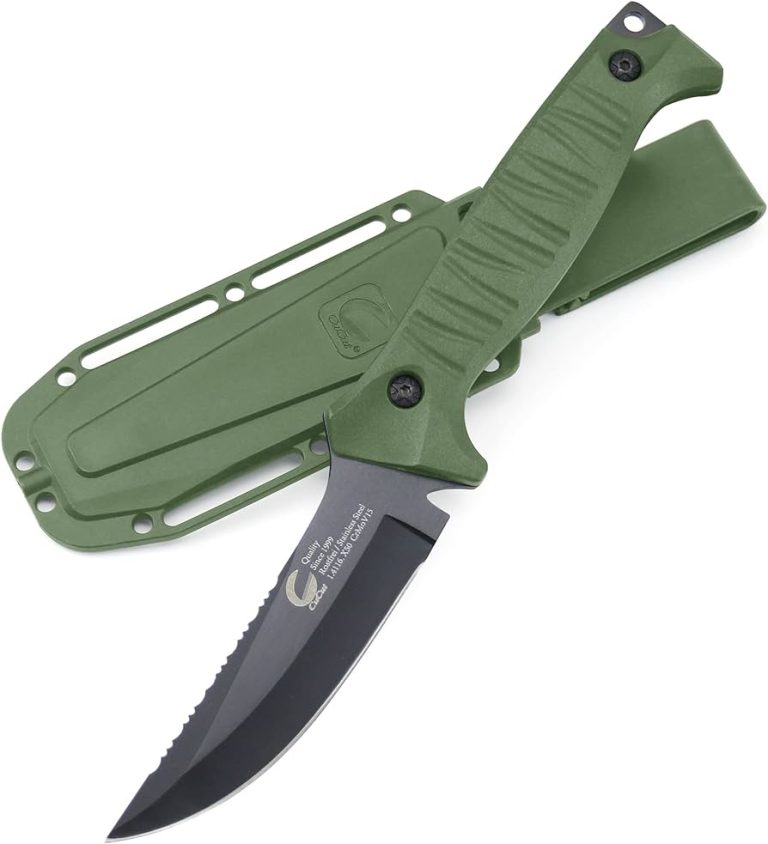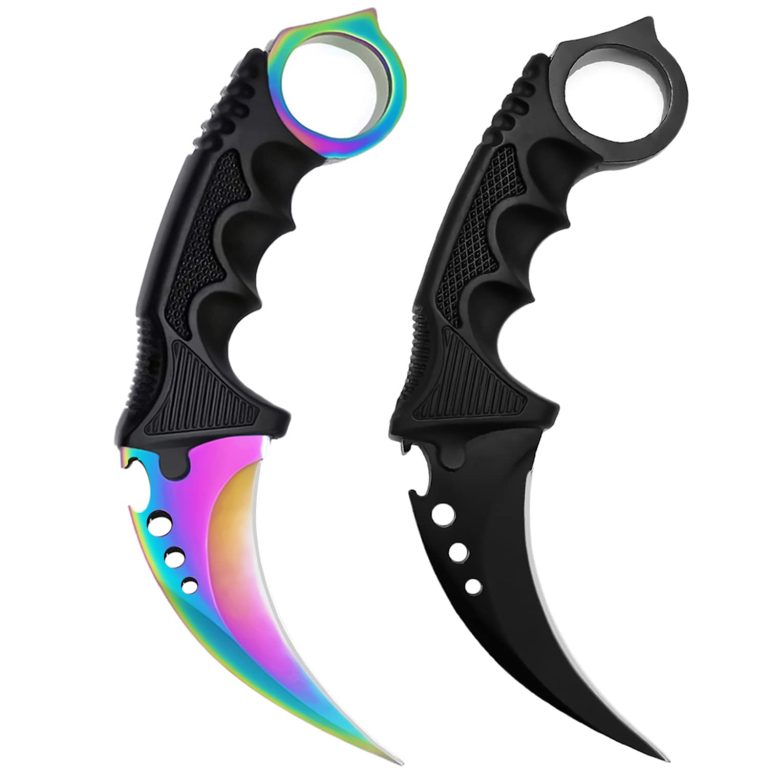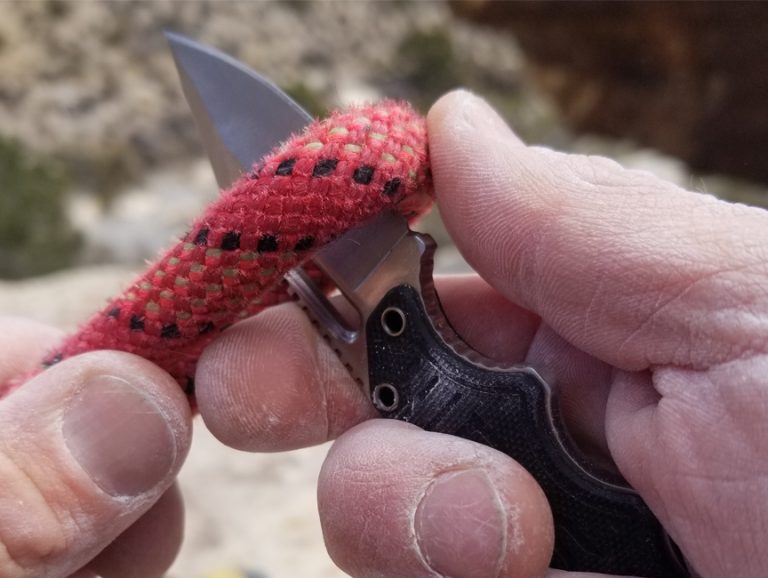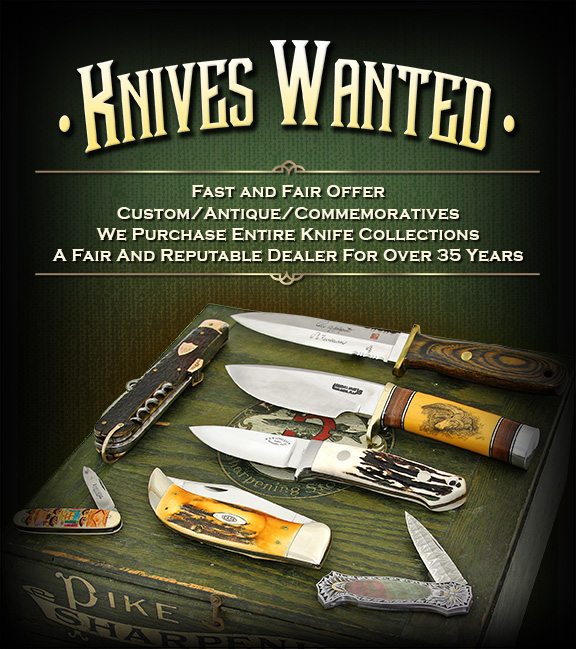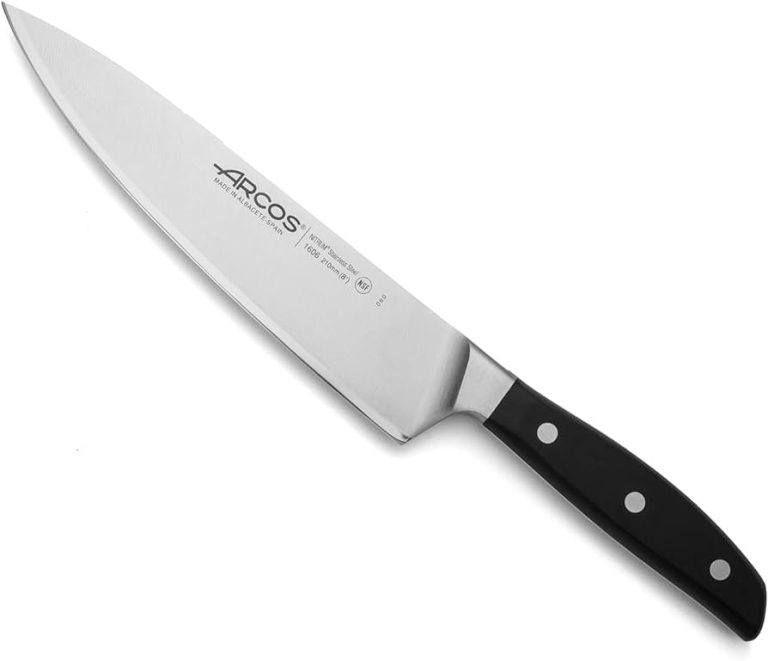Proper Home Knife Storage And Safety Measures
Proper home knife storage and safety measures ensure the safe and organized placement of knives. By following these measures, you can prevent accidents and prolong the lifespan of your blades.
We will discuss the importance of proper knife storage and provide useful tips for maintaining your knives in a safe and efficient manner. From using knife blocks or magnetic strips to storing them in drawers or knife rolls, we will explore different options for storing knives based on your kitchen layout and preferences.
Additionally, we will cover essential knife safety measures such as handling and cleaning techniques, proper use of cutting boards, and teaching children about knife safety. By implementing these practices, you can create a safe environment in your kitchen and make your cooking experience more enjoyable.
Importance Of Proper Knife Storage
Proper knife storage is crucial for both home safety and maintaining the integrity of your knives. Keep blades protected and organized with the right storage solutions, reducing the risk of accidents and prolonging the life of your knives.
Proper Home Knife Storage And Safety Measures
Protecting the Safety of Household Members:
- Storing knives safely is of utmost importance to ensure the well-being of everyone in your household.
- Proper storage eliminates the risk of accidents and injuries that can occur when knives are not secured correctly.
- It prevents accidental cuts when reaching into drawers or cabinets.
- Storing knives safely reduces the chances of children accessing them and getting hurt.
- By implementing proper knife storage, you create a secure environment for your family.
Prolonging the Life of Your Knives:
- Effective knife storage helps to extend the lifespan of your precious kitchen tools.
- Properly storing knives prevents them from getting damaged or chipped by other utensils or hard surfaces.
- Eliminating unnecessary wear and tear on your knives ensures they remain in optimal condition for longer.
- By keeping knives safely in dedicated storage options, you minimize the risk of accidental damage.
- Prolonging the life of your knives saves you money in the long run.
Maintaining the Sharpness and Performance:
- Proper storage also plays a crucial role in maintaining the sharpness and performance of your knives.
- Storing your knives securely prevents them from coming into contact with other objects that can dull the blade.
- Keeping knives in a knife block or magnetic strip ensures they are protected from scratches or nicks.
- Proper storage minimizes the need for frequent sharpening, preserving the knife’s original sharpness.
- Maintaining sharpness and performance ensures precision and ease when using your knives in the kitchen.
Remember, prioritizing proper home knife storage benefits both the safety of your household members and the longevity of your knives. By storing knives securely, you create a hazard-free environment while extending the lifespan and maintaining the performance of your valuable kitchen tools.
So, let’s explore the various methods of proper knife storage and safety measures you can implement in your home.
Essential Factors To Consider Before Storing Knives
Before storing knives in your home, there are essential factors to consider for proper storage and safety. These include using a knife block or magnetic strip, keeping knives out of reach of children, storing knives separately to prevent damage, and regularly cleaning and maintaining them to ensure their longevity.
As knife enthusiasts, we understand the value of proper home knife storage and the importance of implementing safety measures. When it comes to storing knives, there are a few essential factors to consider. Let’s explore them below:
Type Of Knife And Blade Material
Choosing the right storage method goes beyond finding a spot to tuck your knives away. Different types of knives and blade materials require specific care to maintain their sharpness and avoid potential damage. Here are some considerations:
- Chef’s knives: These versatile blades are commonly used in kitchens and require careful handling. Due to their size and weight, it’s best to store them in a dedicated knife block or on a magnetic strip securely.
- Serrated knives: With their saw-like edges, serrated knives need to be stored separately to prevent them from dulling other blades. Consider using an individual sheath or knife roll for optimum protection.
- Stainless steel blades: This type of blade is quite common for kitchen knives due to its resistance to corrosion. However, it’s crucial to store these knives in a dry environment to prevent any potential rusting.
- Carbon steel blades: Known for their superior sharpness, carbon steel blades are more prone to rusting. It’s essential to keep them away from moisture and store them in a well-ventilated area to maintain their quality.
Assessing Available Storage Space
Before you embark on choosing a storage solution for your knives, take a moment to assess the available storage space in your kitchen or living area. Consider the following points:
- Knife blocks: These compact wooden or metal blocks provide convenient storage, while also keeping your knives easily accessible. Ensure you have adequate counter space to accommodate the block securely.
- Magnetic strips: If counter space is limited, you can install a magnetic strip on the wall to hold your knives. This option not only provides easy access but also adds a stylish touch to your kitchen.
- Drawer inserts: Knife drawer inserts are a practical solution to keep your blades organized and hidden away. Ensure the insert fits securely in your drawer and allows for easy retrieval of your knives.
Accessibility And Convenience
Beyond the type of knife and available storage space, accessibility and convenience play crucial roles in choosing the most suitable storage method. Consider the following factors:
- Frequent use: If you find yourself reaching for a particular knife often, opt for storage that provides quick and easy access. Knife blocks or magnetic strips near your primary food preparation area may be ideal.
- Safety precautions: If you have children or visitors in your home, safety should be a top priority. Choose a storage option that keeps your knives out of reach or incorporates safety features like locking mechanisms.
- Travel and portability: For those who frequently cook on the go or need to transport their knives, consider knife rolls or cases that provide secure storage and ease of transport.
Remember to assess your specific needs and preferences when deciding on the appropriate knife storage method. By considering the type of knife and blade material, available storage space, and accessibility factors, you’ll ensure that your knives are both well-preserved and easily accessible when needed.
Different Storage Options For Knives
Discover the best storage options for knives in your home, ensuring proper safety measures. From magnetic knife strips to knife blocks, find the perfect solution for organizing and protecting your kitchen knives.
:
Knife Blocks And Knife Racks:
- Placing your knives in a sturdy knife block or rack can offer both convenience and safety. These storage solutions keep your knives readily accessible while protecting the blades from damage. Some advantages of using knife blocks and racks include:
- Efficient use of countertop or wall space: These storage options are designed to maximize your available space, whether you prefer to keep your knives on the counter or mounted on the wall.
- Easy knife identification: With the blades positioned upright, it’s easier to identify the specific knife you need at a glance.
- Enhanced safety: Knife blocks and racks feature slots or spaces that hold the blades securely, preventing accidents caused by loose knives in drawers.
- Preservation of knife sharpness: By storing your knives in a knife block or rack, you can protect their sharpness by avoiding contact with other utensils or surfaces. This prolongs the lifespan of your blades and reduces the need for frequent sharpening.
- Versatile and customizable: Knife blocks and racks come in various sizes and designs, allowing you to choose one that fits your kitchen decor and knife collection.
Magnetic Knife Strips:
- Magnetic knife strips provide a sleek and space-saving storage solution for your knives. Here are a few benefits of using magnetic knife strips:
- Easy access and visibility: With magnetic knife strips, you can easily see and access your knives, making meal preparation quicker and more efficient.
- Flexible placement: Magnetic knife strips can be mounted on walls, backsplashes, or inside cabinet doors, giving you the flexibility to position them wherever is most convenient for you.
- Preserves blade sharpness: Unlike traditional knife storage methods, magnetic strips keep the blades separate, reducing the risk of dulling or chipping.
- Hygienic: Magnetic strips keep your knives suspended in the air, minimizing contact with surfaces that may harbor bacteria or other contaminants.
- Modern and stylish: Magnetic knife strips provide a modern and minimalist aesthetic, adding a touch of elegance to your kitchen.
Knife Guards And Blade Covers:
- Knife guards and blade covers offer a practical solution for protecting your knives during storage and transport. Here are some reasons to consider using them:
- Safety and accident prevention: Knife guards and blade covers provide a shield for the sharp edges, reducing the risk of accidental cuts or injuries when reaching for a knife in a drawer or bag.
- Blade protection: These covers help prevent damage to the blade, such as scratches or nicks, that can occur when knives come into contact with other utensils or objects.
- Travel-friendly storage option: If you need to transport your knives, whether for a camping trip or a cooking class, using a knife guard or blade cover ensures their safekeeping during transit.
- Affordable and versatile: Knife guards and blade covers are available in various sizes and materials, making them suitable for different types of knives and budget ranges.
Drawer Inserts And In-Drawer Knife Blocks:
- Drawer inserts and in-drawer knife blocks offer an organized and space-saving solution for keeping your knives safely stowed away. Here are some advantages of using these storage options:
- Maximizes drawer space: Drawer inserts and in-drawer knife blocks utilize the vertical space within your drawer, allowing you to free up valuable countertop or wall space.
- Keeps knives protected: By securely holding each knife in place, these storage options prevent blades from knocking against one another or other utensils, which can cause damage.
- Enhanced safety: Placing knives in a drawer keeps them out of reach from children, reducing the risk of accidents.
- Concealed storage: If you prefer a clutter-free countertop, drawer inserts and in-drawer knife blocks provide a discreet storage option, keeping your knives hidden from view.
- Customizable and adaptable: These storage solutions come in various sizes and configurations, allowing you to tailor them to your specific knife collection and drawer dimensions.
Consider these various storage options for knives to ensure both the safety and longevity of your blades. Whether you opt for a knife block, magnetic strip, knife guard, or drawer insert, finding the right storage option can transform your kitchen into a well-organized and efficient culinary haven.
Best Practices For Proper Knife Storage
Discover the best practices for proper home knife storage to ensure safety. Protect yourself and your loved ones by following these essential guidelines for storing your knives in a secure and organized manner.
Proper knife storage is essential for both safety and maintaining the quality of your knives. By following these best practices, you can ensure that your knives are kept in optimal condition and reduce the risk of accidents in your home.
Cleaning And Drying The Knives Before Storage:
When it comes to storing knives, cleanliness is key. Before placing your knives in the storage solution, make sure to clean them thoroughly. Follow these steps for cleaning and drying your knives properly:
- Rinse the knives with warm water and gentle dish soap.
- Use a soft sponge or cloth to gently scrub away any food residue.
- Pay extra attention to the blade and handle to ensure all dirt and debris are removed.
- Rinse the knives again with warm water to remove any remaining soap.
- Dry the knives completely with a clean towel or let them air dry.
Properly Organizing Knives In The Storage Solution:
To prevent accidents and keep your knives easily accessible, it’s important to organize them properly in the storage solution. Here are some tips for organizing your knives:
- Use a knife block, magnetic strip, or knife roll to store your knives safely.
- Keep sharp knives separate from other utensils to avoid accidental cuts.
- Store knives with handles facing outwards to allow for easy identification.
- Consider organizing knives by size or type for convenience.
Regularly Inspecting And Maintaining The Storage Solution:
In addition to cleaning and organizing your knives, it’s crucial to regularly inspect and maintain the storage solution itself. Follow these steps to ensure the longevity and functionality of your storage solution:
- Check for any signs of wear and tear or damage to the storage solution.
- Inspect the knife slots or compartments for any buildup of dirt or debris.
- Wipe down the storage solution regularly with a damp cloth.
- If necessary, apply food-safe oil to wooden knife blocks to keep them in good condition.
By following these best practices for proper knife storage, you can maintain the safety of your household while prolonging the lifespan of your knives. Remember to clean and dry your knives before storing them, organize them in a suitable storage solution, and regularly inspect and maintain that storage solution for optimal results.
Safe Handling Of Knives
Proper home knife storage and safety measures are crucial for ensuring the safe handling of knives. Keep knives securely stored and out of reach of children, use knife guards or sheaths, and always handle them with caution to prevent accidents.
Using Appropriate Cutting Surfaces:
- When handling knives in your home, it is crucial to choose the right cutting surface. Opt for materials that won’t dull or damage your knives, such as wood, plastic, or bamboo cutting boards. Avoid using hard surfaces like glass or marble, as they can quickly dull the blades.
- Regularly inspect your cutting boards for any deep grooves or cracks. These crevices can harbor bacteria and make it difficult to clean properly. It’s best to replace damaged cutting boards to maintain food safety and prolong the lifespan of your knives.
Holding the Knife Correctly:
- Properly holding a knife is essential for efficient and safe cutting. Use the following guidelines to hold your knife correctly:
- Grip the handle firmly but not too tightly. This allows for better control and reduces the risk of the knife slipping from your hand.
- Wrap your fingers around the handle, with your thumb resting on the side of the blade. This grip provides stability and precision while cutting.
- Avoid holding the knife too close to the blade or too far back on the handle. Finding the right balance point enhances your cutting technique.
Keeping Fingers Clear while Cutting:
- Accidental cuts and injuries can occur when fingers come into contact with the blade. Follow these tips to keep your fingers safe while cutting:
- Curl your fingers under and hold the food securely with your fingertips tucked away from the blade. This grip ensures that your fingers are safely positioned and minimizes the risk of accidental cuts.
- Use a proper cutting technique, such as the “claw grip,” where the fingertips are curled inward, guiding the blade while keeping them well clear of the cutting path.
- Pay close attention to your cutting motions and maintain a slow and steady pace. Avoid rushing or performing quick, reckless movements that increase the chances of cutting yourself.
Remember, safe handling of knives is paramount to prevent accidents and injuries in your home kitchen. By using appropriate cutting surfaces, holding the knife correctly, and consciously keeping your fingers clear while cutting, you can ensure the safety of yourself and others while preparing delicious meals.

Credit: fnsharp.com
Knife Maintenance Tips For Safety
Proper knife storage and safety measures are essential for maintaining a safe kitchen environment. Follow these tips to keep your knives in top condition and prevent accidents at home.
Sharpening And Honing The Blades
Maintaining sharp and properly honed knives is crucial for both efficient cutting and safety in the kitchen. Here are some essential tips for sharpening and honing your knife blades:
- Use a sharpening stone: Invest in a high-quality sharpening stone that matches the type of blade you have. Wet the stone and hold the knife blade at a 20-degree angle, then slide it back and forth. Repeat this process several times on each side of the blade until you achieve the desired sharpness.
- Hone regularly: Honing helps to maintain the sharpness of your knife’s blade. Use a honing steel or rod, holding it at a 15-degree angle against the blade. Gently slide the blade from the base to the tip across the steel, repeating this motion on each side of the blade a few times.
- Be consistent: Develop a routine for sharpening and honing your knives. Regular maintenance will keep your blades in optimal condition and prevent them from becoming dangerously dull.
- Safety precautions: When sharpening your knives, always take safety measures. Use protective gloves if necessary, and ensure a stable surface to prevent accidents. Remember to keep your fingers away from the blade, using a firm grip on the handle.
Properly Storing And Handling Sharpening Tools
Taking proper care of your sharpening tools is just as crucial as maintaining your knives. Follow these guidelines to ensure you are storing and handling your sharpening tools correctly:
- Store in a safe place: Keep your sharpening tools in a secure location to prevent accidents or damage. Whether it’s a sharpening stone or honing steel, choose a spot where they won’t be knocked or fall onto a hard surface.
- Clean and dry: After each use, clean your sharpening tools with water and mild soap. Ensure they are completely dry before storing them to prevent rust or corrosion.
- Protect the edges: Be mindful to store your sharpening tools in a way that protects their edges. Avoid tossing them into a drawer or leaving them exposed on a countertop, as this can lead to unnecessary wear and tear.
- Proper handling: When handling your sharpening tools, always hold them with care. Keep a firm grip to avoid dropping them, which could cause injury or damage to the tool.
Avoiding Damaging Cutting Surfaces
Not only should you maintain the sharpness of your knives, but you should also be mindful of the surfaces you use them on. To avoid damaging cutting surfaces and ensure their longevity, consider the following tips:
- Use cutting boards designed for knives: Invest in cutting boards specifically made for knife use, such as those made of high-density polyethylene or bamboo. These materials are gentle on the knife blades, minimizing the risk of damage.
- Avoid hard surfaces: Refrain from using your knives on hard surfaces like countertops, metal, or glass. These materials can dull your blades quickly and potentially cause chipping or breaking.
- Avoid cutting frozen or hard food directly: If you’re dealing with frozen or hard food items, such as bones, use a specialized tool rather than your kitchen knife. This will prevent unnecessary strain on your knife blades and potential damage.
- Maintain cleanliness: Clean and sanitize your cutting surfaces regularly to prevent cross-contamination and the accumulation of bacteria. Proper upkeep will also help extend the life of your cutting boards.
By following these knife maintenance tips, you can ensure the longevity of your blades, maintain their sharpness, and reduce the risk of accidents in the kitchen. Remember, proper care and handling of your knives and sharpening tools are essential for both performance and safety.
Common Knife Safety Precautions
Discover some common knife safety precautions for proper home knife storage and safety measures. Take the necessary steps to ensure a safe and secure environment for handling knives at home.
Never Leaving Knives Unattended
Leaving knives unattended can lead to accidental injuries. Here are some important safety precautions to follow:
- Always store knives in a designated knife block or on a magnetic strip to ensure they are safely stowed away.
- If you need to step away from the kitchen while using a knife, either pass it to someone else or place it in a safe location away from the edge of the countertop.
- Never leave a knife on a cutting board or countertop, as it increases the risk of someone accidentally coming into contact with it.
- Always properly clean and dry knives after use before storing them away to avoid injuries when reaching for them later.
Properly Passing Knives To Others
Knowing how to safely pass knives to others is crucial in preventing accidents. Follow these guidelines:
- Always hand a knife to someone with the handle extended toward them and the blade facing downward.
- Maintain a firm grip on the handle and ensure the person receiving the knife has a secure hold before letting go.
- Communicate clearly and confidently when passing a knife, making sure both parties understand the transfer is taking place.
- Avoid trying to catch a dropped knife in mid-air, as this can lead to severe injuries. Instead, step back and allow it to safely fall to the ground.
Keeping Knives Out Of Reach Of Children
Children are naturally curious and may be unaware of the dangers posed by sharp objects like knives. Take these precautions to keep knives out of their reach:
- Store knives in a locked drawer or a high cabinet that is inaccessible to children.
- Consider installing childproof locks on kitchen cabinets to provide an extra layer of protection.
- Educate children about the potential dangers of knives and explain the importance of never touching them without adult supervision.
- When cooking with children, teach them proper knife handling techniques and closely supervise their actions.
Remember, following these common knife safety precautions is essential to promote a safe environment in your home. By adhering to these guidelines, you can reduce the risk of accidents and ensure the well-being of everyone in your household.
Additional Safety Measures For Knife Storage
Properly store your knives at home with these additional safety measures, ensuring a secure and hazard-free environment. Guard against accidents with practical storage solutions.
Securing Knife Storage Solutions
When it comes to proper home knife storage, implementing additional safety measures is crucial to ensure the well-being of everyone in your household. By taking the necessary precautions, you can prevent accidents and promote a safer environment. Here are some important guidelines to follow when securing your knife storage solutions:
- Lockable Cabinets: Invest in lockable cabinets or drawers specifically designed for knife storage. This will help keep your knives securely locked away, preventing unauthorized access, especially if you have curious children around.
- Magnetic Knife Strips: Consider using magnetic knife strips as an alternative storage solution. These strips allow you to attach your knives vertically, ensuring that the blades are secured and facing downwards. Just make sure to install them in an easily accessible but safe area.
- Knife Blocks: If using a knife block, opt for one that is stable and has a solid base. This will prevent it from tipping over and causing accidents. Choose a knife block that has slots specifically designed to fit different knife sizes, keeping them organized and reducing the risk of mishandling.
Designating A Specific Area For Knife Storage
Creating a designated area for knife storage is essential for maintaining organization and safety in your kitchen. By designating a specific spot, you can ensure that everyone knows where the knives are stored and can use them responsibly. Here’s how to create an organized and safe knife storage area:
- Accessible but Out of Reach: Place your knife storage area in a location that is easily accessible for adults but out of reach for children. This could be a high shelf or a locked cabinet that can only be accessed by responsible individuals.
- Separate from Other Utensils: Keep your knives separate from other utensils to avoid accidental injuries while reaching for them. This will also prevent any damage to the knife blades caused by contact with other kitchen tools.
- Avoid Overcrowding: Ensure that your knife storage area has enough space to properly accommodate all of your knives. Overcrowding can lead to accidents when trying to retrieve or store knives. Allow each knife to have its own designated spot to avoid unnecessary contact and potential injuries.
Providing Clear Warnings And Labels
Clear warnings and labels play a vital role in ensuring knife storage safety. By providing explicit instructions and labels, you can effectively communicate potential risks and inform users about safe handling practices. Consider the following measures:
- Safety Labels: Label knife storage solutions with clear warnings about the sharpness of the blades and the importance of safe handling. These labels can serve as constant reminders to exercise caution when accessing and storing the knives.
- Safety Guidelines: Display safety guidelines in your kitchen or near the knife storage area. These guidelines should include instructions on how to handle knives safely, proper cleaning techniques, and precautions to prevent accidents.
- Educate Household Members: Take the time to educate all members of your household about proper knife storage and safety measures. Emphasize the importance of securely storing knives and the risks associated with mishandling them.
Remember, prioritizing safety when it comes to knife storage is indispensable for protecting yourself and those around you from potential accidents. By following these additional safety measures, you can create a safer environment and promote responsible knife usage.
Frequently Asked Questions Of Proper Home Knife Storage And Safety Measures
What Are 3 Tips For Storing Knives?
1. Store knives in a knife block or sheath to protect the blade and prevent accidents. 2. Keep knives separate and avoid stacking them to prevent scratches and maintain their sharpness. 3. Store knives in a dry and secure location, away from moisture and children’s reach.
What Is The Safest Way To Store Kitchen Knives?
Store kitchen knives safely by keeping them in a knife block, sheath, or on a magnetic strip.
What Are The Tips For Storing Knives?
To store knives effectively, follow these tips: – Keep them in a knife block or a magnetic strip to prevent damage. – Clean and dry them before storing to avoid rust and corrosion. – Store them away from direct sunlight and moisture to maintain their sharpness.
– Use blade guards or sheaths to protect the blades and prevent accidents.
What Are 8 Rules For Knife Safety?
Here are 8 rules for knife safety:1. Always use a sharp knife to reduce slipping accidents. 2. Hold the knife with a secure grip to avoid dropping it. 3. Cut away from your body to prevent self-inflicted injuries. 4. Keep your fingers away from the blade while slicing or chopping.
5. Do not leave knives unattended, always put them away when not in use. 6. Use a cutting board to provide stability and protect your surfaces. 7. Clean and dry knives properly to prevent rust or accidents during storage. 8.
Teach children the importance of knife safety and never let them use knives unsupervised.
Conclusion
Proper home knife storage and safety measures are of utmost importance to ensure a safe and efficient culinary experience. By following these guidelines, you can protect yourself and others from potential accidents and maintain the lifespan of your knives. Keep your knives in a designated storage space, such as a knife block or magnetic strip, to prevent them from being damaged or causing harm.
Always handle knives with care, gripping them firmly and avoiding distractions while using them. Regularly sharpen and maintain your knives to maintain their sharpness and reduce the risk of accidents. Lastly, teach proper knife handling techniques to anyone who uses your kitchen to promote a safe environment for all.
Taking these precautions will not only protect you, but also enable you to enjoy cooking with precision and ease.

